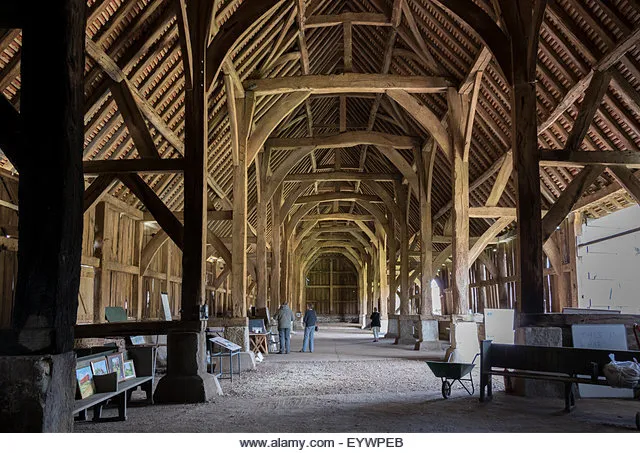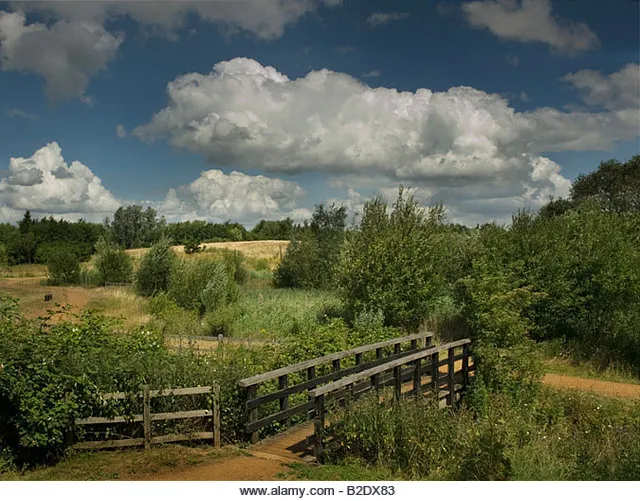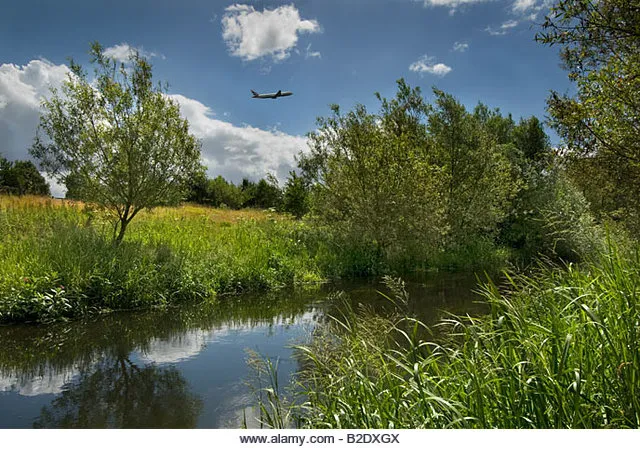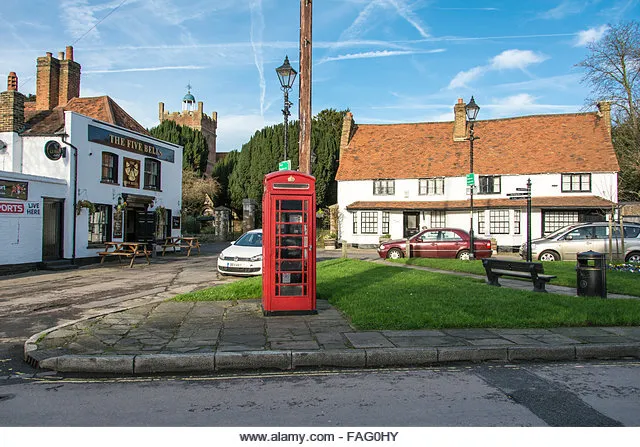Some villages don't really live up the name: you arrive, only to discover the place is really just a jumble of non-descript houses pegged on to urban sprawl and with no sense of community.
Harmondsworth is different. The High Street is a cul-de sac, there's two pubs, a post office, two stores, a day nursery, a scout hut and a church dating to 1067, whose arch was imported and pre-dates the Norman conquest. Some of the houses have lean-to chimneys and roofs that dip and pitch with hints of medievalism. The crowning glory is the truly stunning Great Barn, one of the most complete and unaltered pre-Dissolution buildings in Britain. Its magnificent roof, restored by English Heritage, is 60m long and supported by 13 huge oak trusses.

So far, Harmondsworth ticks every box for the rural idyll; it is even flanked on two sides by a farm, paddocks and grazing land. Harmondsworth's problem though, is that it is also flanked by Heathrow airport and, after the Government announced in November that it favoured building a third runway in west London, its future looks bleak. The barn will be one of the few buildings to be spared.

I walk through the graveyard and into a pleasing landscape of native trees, scrub and waterways, known as Harmondsworth Moor. I spot a firecrest, many coots and the noticeboards encourage me to return in spring to enjoy the abundant dragonflies and perhaps spy a grass snake. Meanwhile, a fuselage is catapulted into the skies from behind the village every minute or so.
I soon reach Saxon Lake. Enjoy this spot, fringed with common reed mace and bordered with fields grazed by sheep, while you can. Stand with the lake behind you and you are looking east directly along the length of the third runway.

I continue and encounter the first Bladerunner moment of the walk as I cross a footbridge above the M4. The noise levels of the airport have been described as unacceptable by the London Mayor, Sadiq Khan. Yet so far on this walk, the drone of the motorway has out-competed that of aircraft: the two must be maddening to live with. They also present combined air pollution of threats of real concern. Khan has called the decision to site a third runway at Heathrow 'irresponsible' and says it would make London's air pollution crisis even worse.
My path picks up the River Colne and slips back under the motorway. The river winds and turns; I find it refreshing it has been allowed to breath and not grudgingly restricted to the confines of a canalised waterway. The moor, too, feels like a country park.

I criss-cross the River Colne and climb to a modest rise, known as The Keyhole, an assemblage of stone that turns out to be remnants of the original Waterloo Bridge. I drop down to the Wraysbury River and a truly fetching riverside path where I simultaneously all but rub shoulders once more with the motorway, this time the junction of the M25 and M4.

I return to Harmondsworth, passing Harmondsworth Hall, an attractive Grade II listed building, which is decked out with hanging baskets, and pop into the Five Bells, whose open doors have welcomed patrons for 400 years. If the runway goes ahead, Christine Frangleton, the landlady, believes that final closing time will soon follow. A pub without customers; a church without parishioners: everyone here knows that the runway will herald the death rattle for a village listed in the Domesday Book. 'We'll do well with the construction workers but after that the vibrations from the flights will make the pub crumble,' says Christine. 'This is a quintessential village. There is so much worry, families don't know what to do about schools for their children.'

I walk back up the High Street to the main road and exit a beleaguered bubble of rural England. Later, I speak to Robert Barnstone of the Stop Heathrow Expansion campaign. 'We find it absolutely absurd that the airport claims that an extra 360,000 flights will not lead to more pollution and it will actually mean fewer cars - it's just bizarre,' he says.
It's as though the Government and the airport believe that the noise and impact is so bad already that a new runway cannot make matters any worse. My walk and the people I spoke to suggest that it would.
Explore Harmondsworth for yourself
To reach Harmondsworth by public transport, take a Great Western Railway (www.gwr.com) train to West Drayton. From here take the 350 or U3 bus to Harmondsworth. Ask to be dropped off at the top of the High Street.
You can follow this walk at www.discoveringbritain.org/content/discoveringbritain/walk booklets/Heathrow walk - written guide.pdf.
A couple of the directions are out of date but so long as you use the route overview map on page 5 you won't go wrong.
